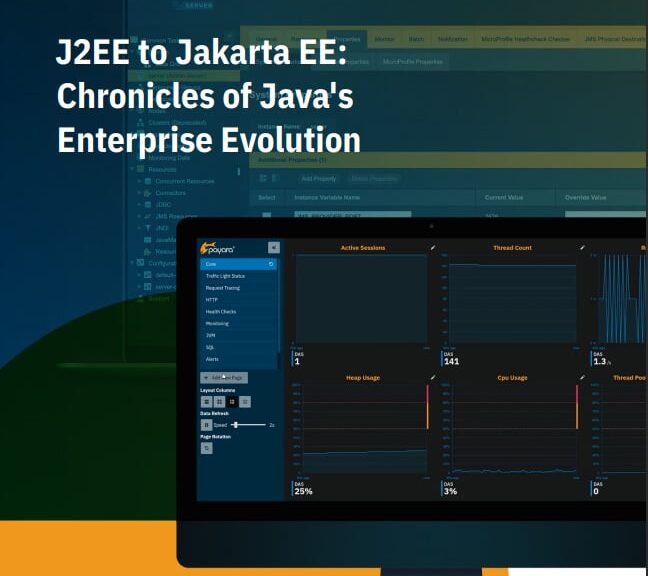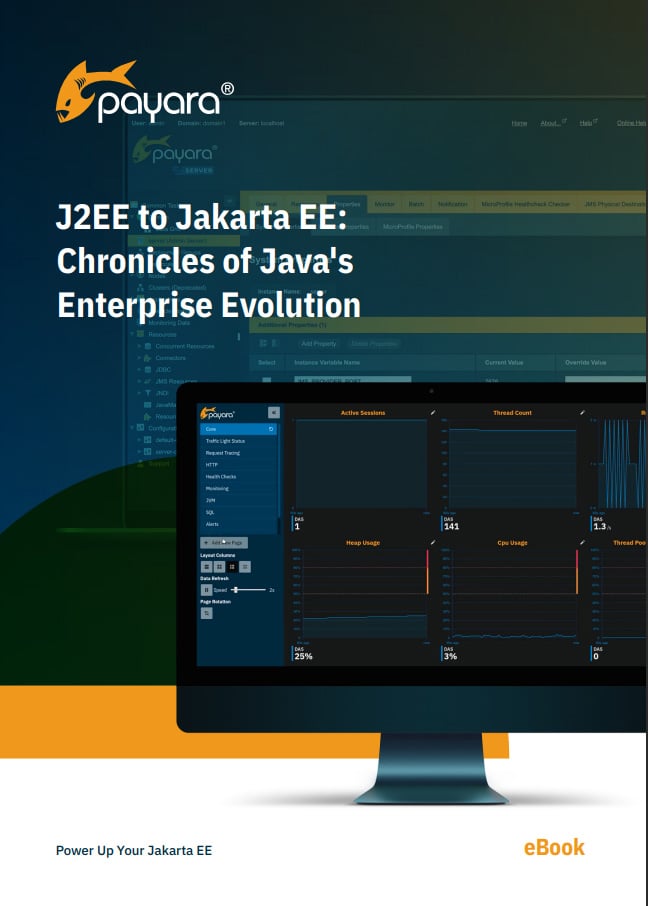 3 minutes
3 minutes
End-of-Life Technology: How to Drive Innovation Without Compromising Stability
When legacy systems approach end-of-life (EOL), enterprise IT teams typically face the choice of moving forward at all costs […]

Jakarta EE (formerly Java EE) is a set of community developed, abstract specifications that together form a platform for developing end-to-end, multi-tier enterprise applications. Jakarta EE is built on the Java Standard Edition, and aims to provide a stable, reliable and vendor neutral platform on which to develop cloud native applications.
Our new eBook – available to download here – discusses the general theory surrounding the Java Enterprise Development platform.

As a Java developer, CTO or the platform architect of an enterprise, you are spoilt for choice when
it comes to frameworks and platforms for software development. A question you might be asking
yourself is why should I choose Jakarta EE as my primary software development platform? What
makes it a better choice?
There are number of reasons to at least give Jakarta EE a try, key among them being:
From J2EE’s early days to today’s Jakarta EE, the evolution has been significant. Jakarta EE now serves as a cutting-edge, streamlined development platform tailored for both enterprise and cloud-native application development. It excels in building mission-critical applications, providing a rich suite of tools and capabilities that ensure high levels of reliability, security, and scalability.
Adopting Jakarta EE enables developers like you to proficiently deliver applications that meet the stringent requirements of enterprise operations while maximising cloud infrastructure advantages. This positions Jakarta EE as a critical tool for developers who aim to produce competitive, robust applications in the dynamic tech industry.
{{cta(‘6c581c26-0060-4100-9206-d7b922a4e056’)}}
Share:
 3 minutes
3 minutes
When legacy systems approach end-of-life (EOL), enterprise IT teams typically face the choice of moving forward at all costs […]
 5 minutes
5 minutes
November has been one of the busiest months of the year for the Java and Jakarta EE ecosystem. With […]
 3 minutes
3 minutes
Working with enterprise Java databases can sometimes feel like swimming upstream. Jakarta EE 11’s Jakarta Data helps developers glide […]
The documents provided from Payara are too general. No detailed helpful information is provided when ever I downloaded previously.
Hi Jim,
Thanks for your comments. We try to balance between theoretical and technical content. You can find plenty of technical content by filtering through the guides that we publish https://www.payara.fish/?s=&category=guide&subject=&post_type=payara_resources.
You can also peruse the Payara Platform documentation that has all the technical information about our products here https://docs.payara.fish/community/docs/Technical%20Documentation/Payara%20Server%20Documentation/Overview.html.
And finally, for custom technical support, you’re welcome to purchase our consultancy services that will give you custom, bespoke technical solutions to your own projects here https://www.payara.fish/enterprise/consultancy/.
Once again, thank you for your comment.